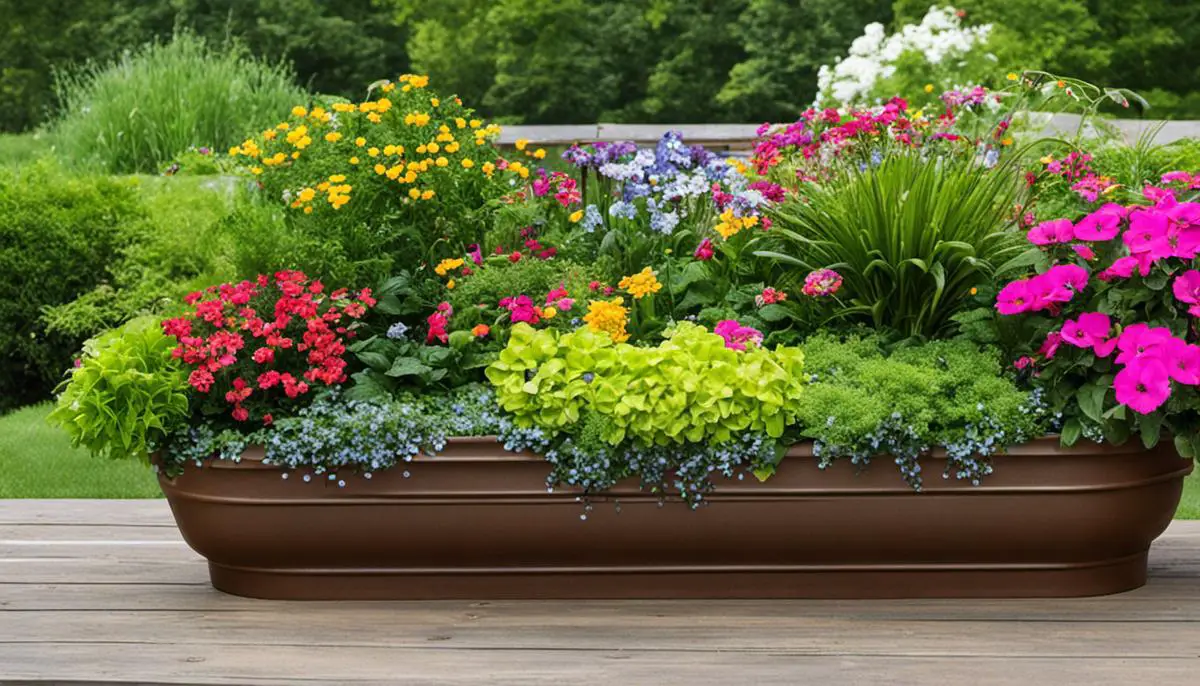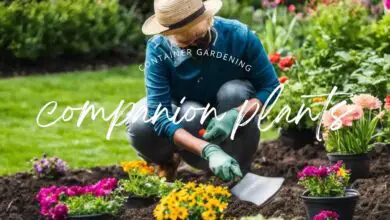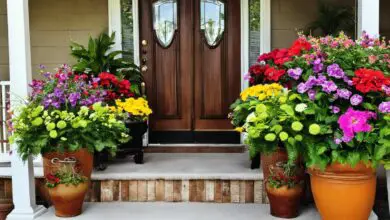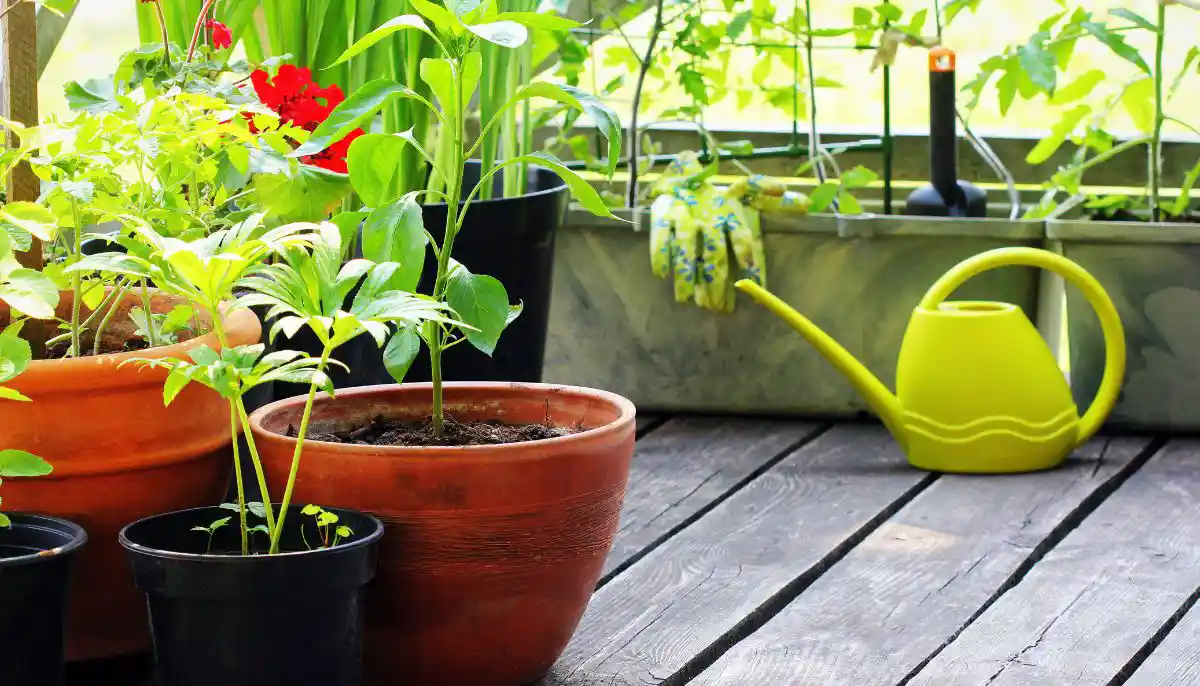Mastering The Container Gardening Method: A Starting Guide
Discover the wonder of gardening within limited space as you delve into the world of container gardening. Ideal for city dwellers or those with limited room to grow, this modern method of agriculture allows anyone to enjoy the fruits of their labor.
The basic principles of container gardening are simple and straightforward, yet the range of possibilities they offer is vast and varied. From selecting the appropriate pots to understanding the importance of drainage, this pursuit offers a satisfying challenge for both novice and experienced gardeners alike.
Learn how to choose suitable plant species and arrange them for maximum beauty and health. Grasp the essential roles of soil mix, watering routine, and fertilizer usage, as well as identifying and combating common pests and diseases.
Understanding Container Gardening
Understanding Container Gardening
Container gardening is a method of growing plants, including vegetables and flowers, in containers instead of planting them in the ground. It’s often the best choice for city dwellers or those with a limited amount of space, like small yards, balconies, or patios.
The Basic Principles of Container Gardening
The first aspect to grasp in container gardening is the type of plant you want to grow. Understanding their requirements, such as sunlight, water, temperature, and space for root growth, is necessary. Knowledge of plants’ needs will aid in determining what type of container to use and where to position it.
Advantages and Disadvantages of Container Gardening
One significant advantage of container gardening is convenience. Gardening becomes simplified due to less weeding and less susceptibility to soil-borne diseases.
Additionally, containers can be easily rearranged for optimal sun exposure or moved indoors when the weather is extreme.
However, container gardening can have its drawbacks. Plants may require more frequent watering as containers can dry out quickly. It can also be challenging to provide larger plants with adequate room for root growth.
Choosing the Right Container for Your Plants
When it comes to choosing containers, the options are seemingly endless. Traditional terracotta pots, wooden boxes, baskets, plastic pots, buckets, and even upcycled items like old boots or colanders can be used.
The crucial criteria in a good plant container is that it must have sufficient depth for root development and drainage holes at the bottom. Your aesthetic preferences, budget, and the needs of the plants will influence the container material choice.
The Role of Drainage in Container Gardening
Drainage plays a pivotal role in the success of your container garden. Plants need water, but they also need to breathe. When there’s too much water, and the soil becomes waterlogged, the roots can suffocate, and the plant may die. That’s why it’s crucial to have holes at the bottom of your containers to allow excess water to escape.
A common practice is to line the bottom of your container with a layer of coarse material like broken pottery or gravel to enhance drainage. However, the effectiveness of this technique has been debatable.
Some gardeners have found success by simply using a potting mix specifically designed for container plants, which contains ingredients to improve drainage.
Container gardening provides an efficient and aesthetically pleasing method for growing plants in environments with limited space. By understanding the fundamentals of container gardening, you can enjoy the benefits of gardening at a smaller, more manageable scale.

Plant Selection and Placement
Choosing the Right Plants for Container Gardening
The initial step in creating a successful container garden is selecting the right plants. The choice of plants depends on several factors, including light, space, and soil requirements.
All plants, whether they are flowers, vegetables, or herbs, have specific light needs, which range from full sun to partial shade or even full shade. Make it a point to investigate the light requirement of the plant.
For container gardening, space is a critical factor. Different plants need different amounts of space to grow properly. For instance, some plants grow tall and require a deep pot, while others spread out and need a wide pot.
The type and quality of soil also play an essential role in plant growth. Some plants require well-drained soil to prevent root diseases, while others require more moisture-retaining soil. The soil’s pH level is also important as some plants prefer a more acidic soil while others prefer a more alkaline soil.
So, make sure to select the appropriate potting mix that matches your chosen plants’ soil requirements.
Arranging Your Plants for Aesthetic Appeal and Health
After choosing the right plants, the following step is to arrange your plants in their containers. Plant arrangement is crucial in achieving maximum aesthetic appeal and ensuring plant health.
Considering the size of the plant is vital in creating a visually appealing arrangement. Taller plants should be placed in the middle of the back of the container, while shorter plants and those that spill over should be located at the edges.
Managing growth rate is also important because faster-growing plants may dominate over slower-growing ones if they are not controlled. Planting slow-growing and fast-growing plants in separate containers might be a solution.
Finally, check the compatibility of the plants. Some plants work well together, while others do not. Certain plants have different water, light, and soil needs that might not match with other plants.
Some plants might even compete for the same resources. Therefore, ensure you are choosing compatible plants for the same container.

Soil, Watering, and Fertilizer Basics
The Right Soil Mix for Container Gardening
When it comes to container gardening, not all soil is created equal. Choosing the right soil mix is critical for your plants’ health. Regular garden soil is usually too heavy and may contain weed seeds, pests, or diseases.
Instead, opt for a lightweight, well-draining potting mix. These mixes often include a combination of peat moss, pine bark, and perlite or vermiculite. The inclusion of these ingredients helps to lighten the soil texture, retain moisture, and promote air circulation around roots.
Watering Your Plants Properly
How often and how much you water your plants depends largely on the specific needs of the plants and the size of the container.
Generally, though, the watering principle for container gardening involves watering deeply but infrequently. Water the plants until you see water emerge from the drainage hole at the bottom of the pot.
The weather and the water requirements of your plants mainly determine the frequency. However, avoid overwatering, as it could cause root rot and diseases.
Fertilizer Application Basics
Container plants cannot seek out nutrients from the surrounding soil, meaning they rely entirely on the nutrients you provide.
A balanced, water-soluble fertilizer is usually best for most containerized plants. This should be applied roughly every two weeks, following the specific instructions on the fertilizer’s packaging.
Remember, fertilizer can’t rectify a poor soil mix—a proper soil base is essential for the overall health and growth of your plants.
Common Pests and Diseases in Container Gardening
In container gardening, common pests include aphids, spider mites, and caterpillars. Fungus gnats, which look like small flies, may also be a problem, especially if your soil is continually damp. Regularly inspecting your plants, including under the leaves and along the stem, can help you catch pests early.
As for diseases, maintaining plant health is key to prevention. Overwatering can lead to root-rot diseases, while planting in containers that previously held diseased plants may lead to recurring issues.
If your plants become diseased, remove any affected parts, reconsider your watering schedule, and ensure the plant has optimal light conditions. If problems persist, you may need to repot the plant using fresh soil and a clean container.

Through understanding the versatile method of container gardening, one opens the door to a world where space is no longer a constraint but a canvas for horticultural creativity.
The principles of plant selection and arrangement, container choice, as well as maintaining soil, and providing adequate water and nutrients are the crux of successful container gardening. With this knowledge, you are equipped to grow your green haven amidst the concrete jungle, connecting with nature in your own unique way.
Beyond the practical benefits, the joy that sprouts from seeing your carefully chosen and tended plants flourish is a truly rewarding experience, redefining what it means to garden in the modern era.
Summary
Container gardening offers an accessible way to grow plants, even in small spaces like balconies or patios. Selecting suitable plant containers and understanding basic care principles are key to success.
Choosing the right plants begins with assessing their light, water, and soil needs. Factors like growth rate and compatibility with other plants must also be considered. Placement depends on height, spread, and ensuring balanced aesthetics.
Drainage is paramount as waterlogged soils damage roots. Containers require drainage holes and layers like gravel at the bottom. Lightweight, well-draining potting mixes support optimal growth versus regular soils.
Watering deeply but infrequently prevents overwatering, a common issue. Fertilizers must be applied to supplement unavailable soil nutrients. Balanced, water-soluble varieties are best applied every two weeks as directed.
Pests are usually visible insects like aphids or spider mites. Fungus gnats thrive in continually damp conditions. Regular inspections allow early detection and treatment. Diseases stem from poor conditions, so maintaining health prevents root rot and issues recurring from contaminated soils or containers.
Understanding these fundamentals unlocks the simple joy of creating portable small-space gardens. Compatible plant combinations, containers, and unique arrangements take creativity beyond constraints. With proper care, the satisfaction of watching your cultivated plants flourish teaches mindfulness in urban settings. Container gardening redefines meaningful greenery for modern lifestyles.
FAQ
What is the rule of thumb for container gardening?
The rule of thumb for container gardening is to select a container size that is appropriate for the plant’s needs. Choose a container that is one or two sizes larger than the plant’s current container. This allows room for the plant’s roots to grow and prevents them from becoming root-bound. If the roots are circling the pot inside or if there are more roots than soil, it is time to repot the plant into a larger container.
How many plants can you put in a 12-inch container?
The number of plants you can put in a 12-inch container depends on a few factors, including the size and type of plants, the spacing requirements, and the desired aesthetic effect. However, a general rule of thumb is to plant 3-4 average-sized annuals in a 12-inch container. If you are planting larger plants, such as perennials or shrubs, you may only be able to plant 1-2 plants per container.
What is the most common mistake made with container plants?
The most common mistake made with container plants is overwatering. Overwatering can lead to root rot and other issues, ultimately causing the plants to suffer or even die. It is important to understand the specific watering needs of the plants you are growing in containers and to avoid excessive watering.
Can you put too many plants in a container?
You can put too many plants in a container. Having too many plants means they must compete for water, nutrients, and sunlight. This leads to stunted growth, yellow leaves, and death. Overcrowding also increases pest and disease risks since issues spread easily between plants. Poor air circulation from blocked space can then cause root rot and other issues.
What are the four main issues with container-grown plants?
There are four main issues that can arise with container-grown plants:
01. Compacted soil hinders root growth and water drainage due to a lack of space for roots to spread.
02. Overheated plants that experience stress or damage from containers heat up quickly in the sun and heat.
03. Failure to thrive when water, sunlight, nutrients, or care are inadequate leads to stunted growth and yellow leaves.
04. Plant incompatibility from mixing those with differing needs that then compete for resources in the same container.



